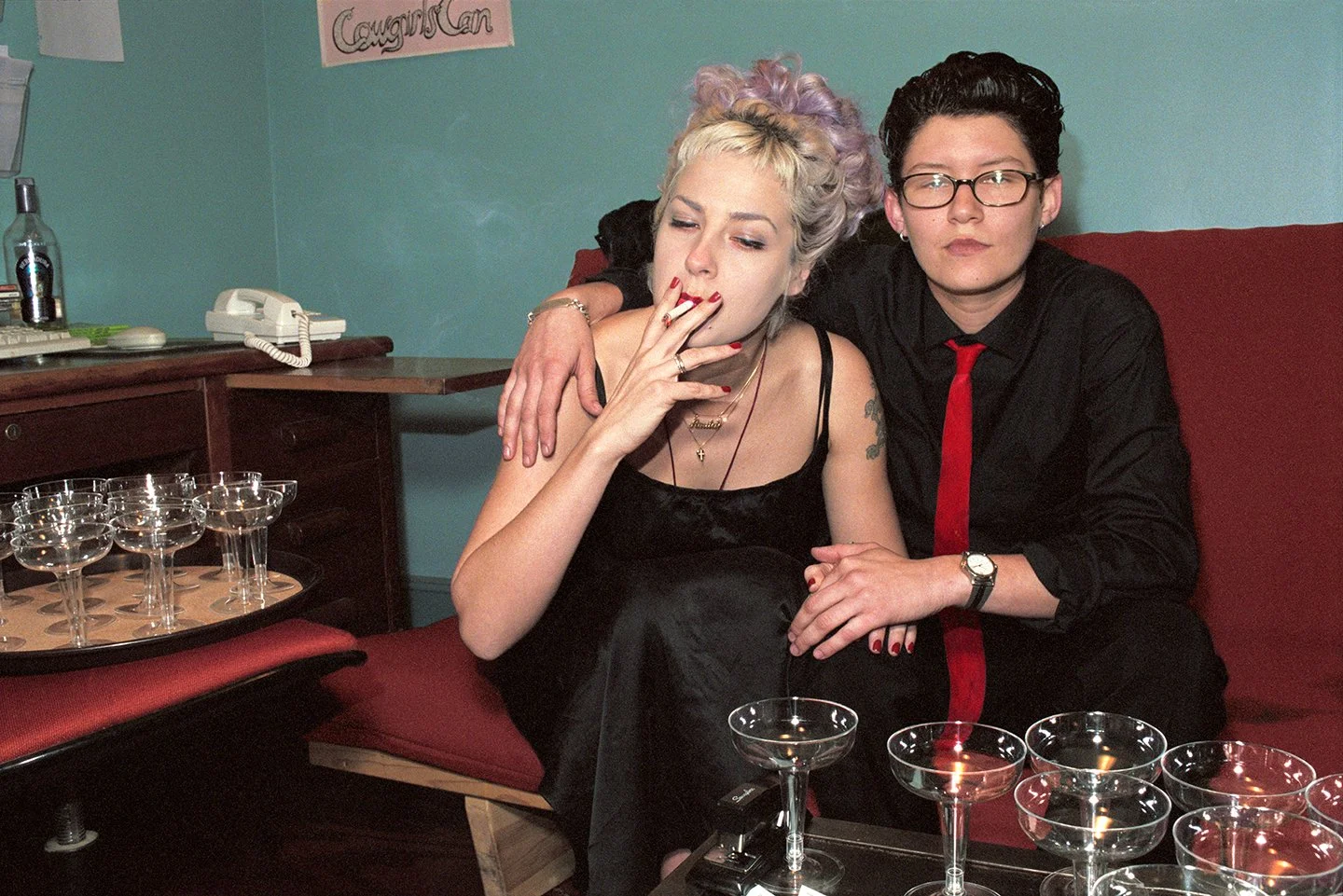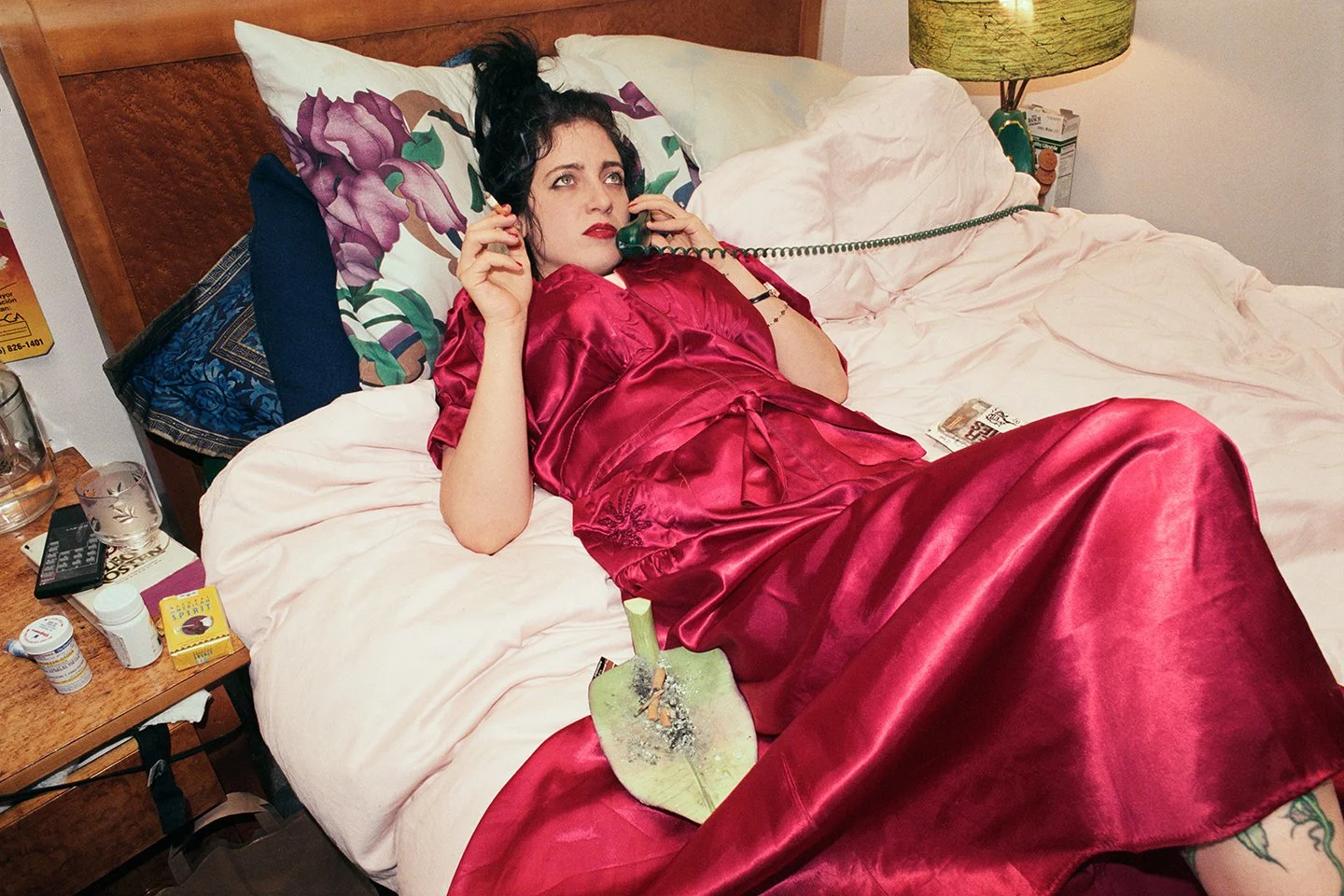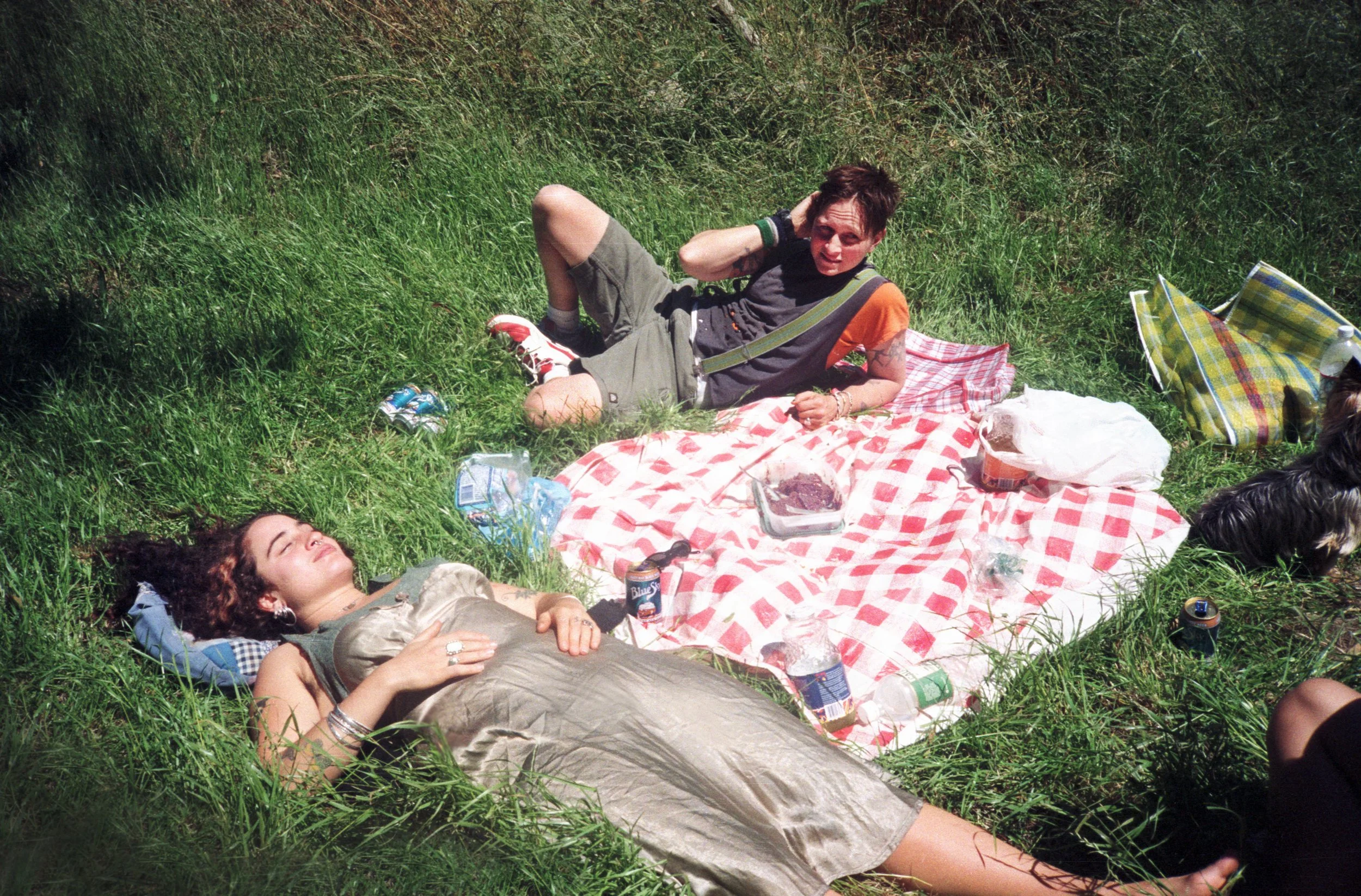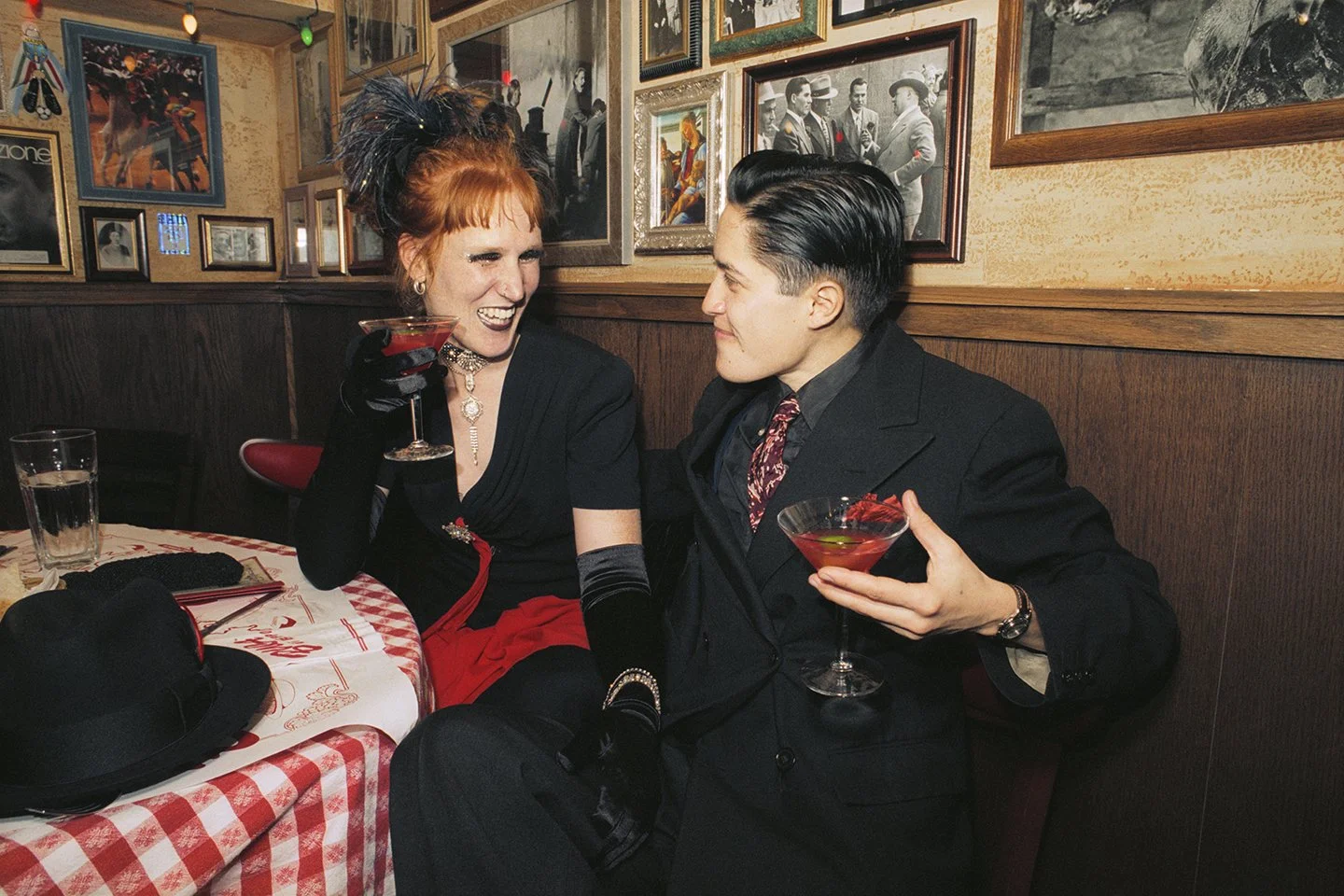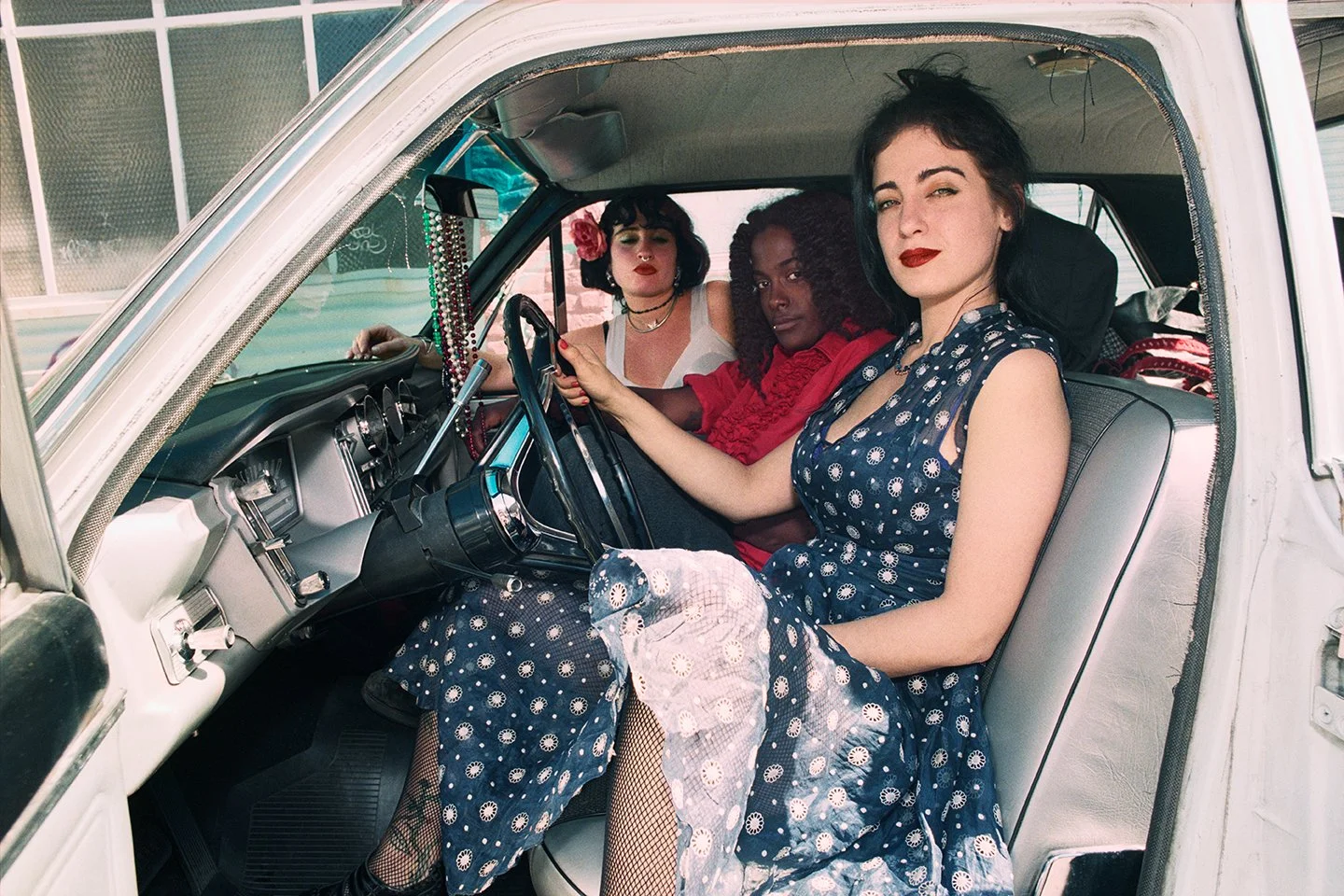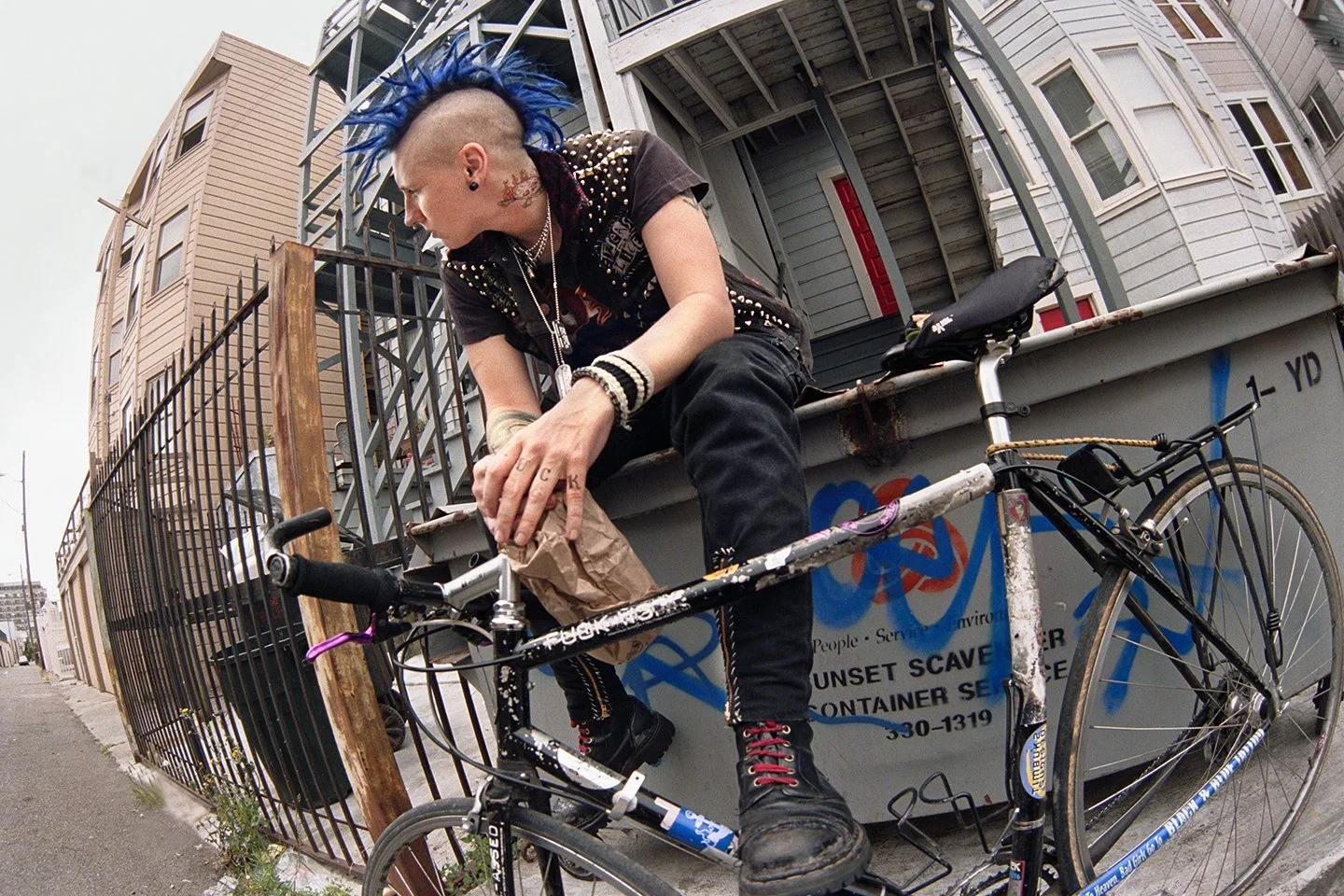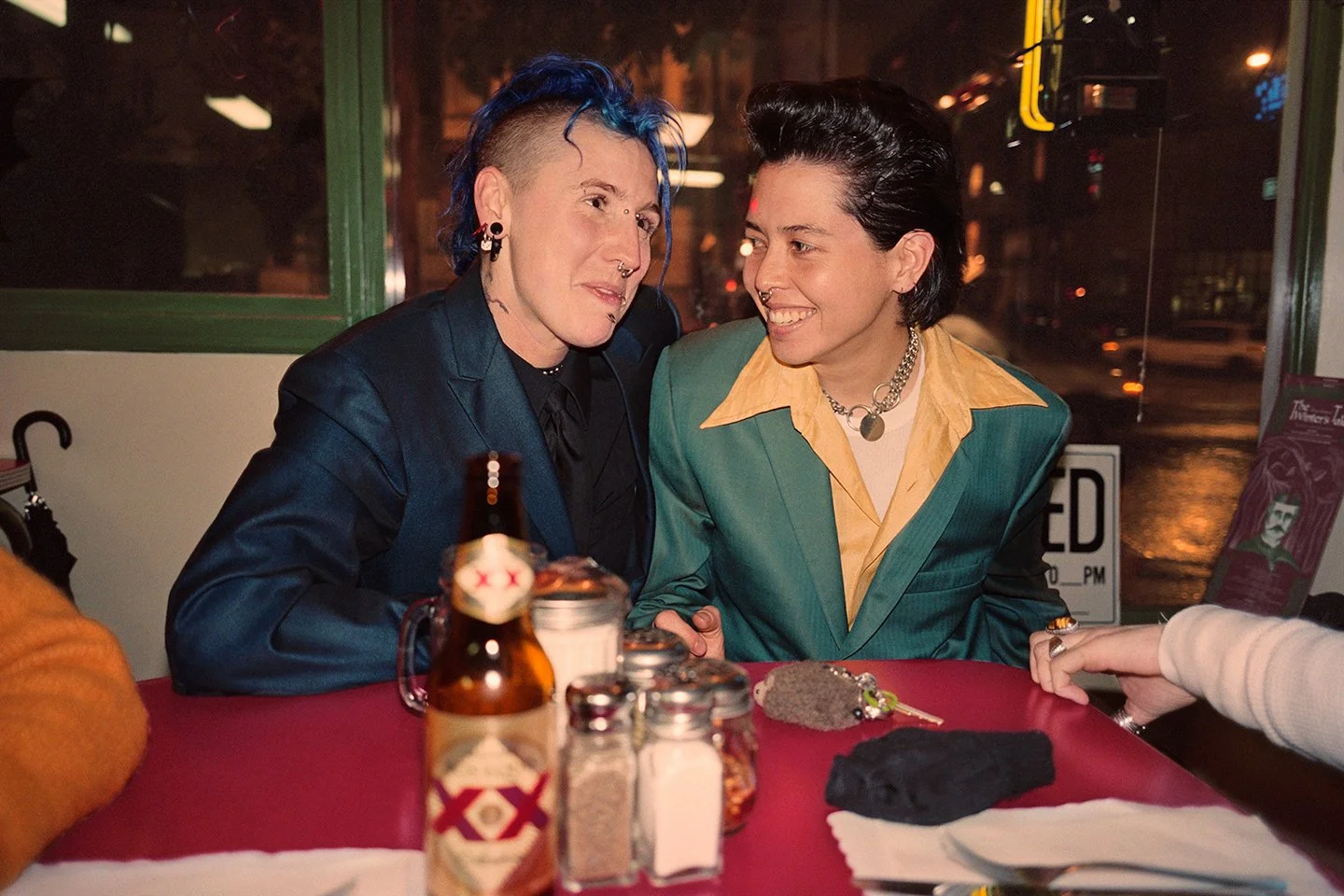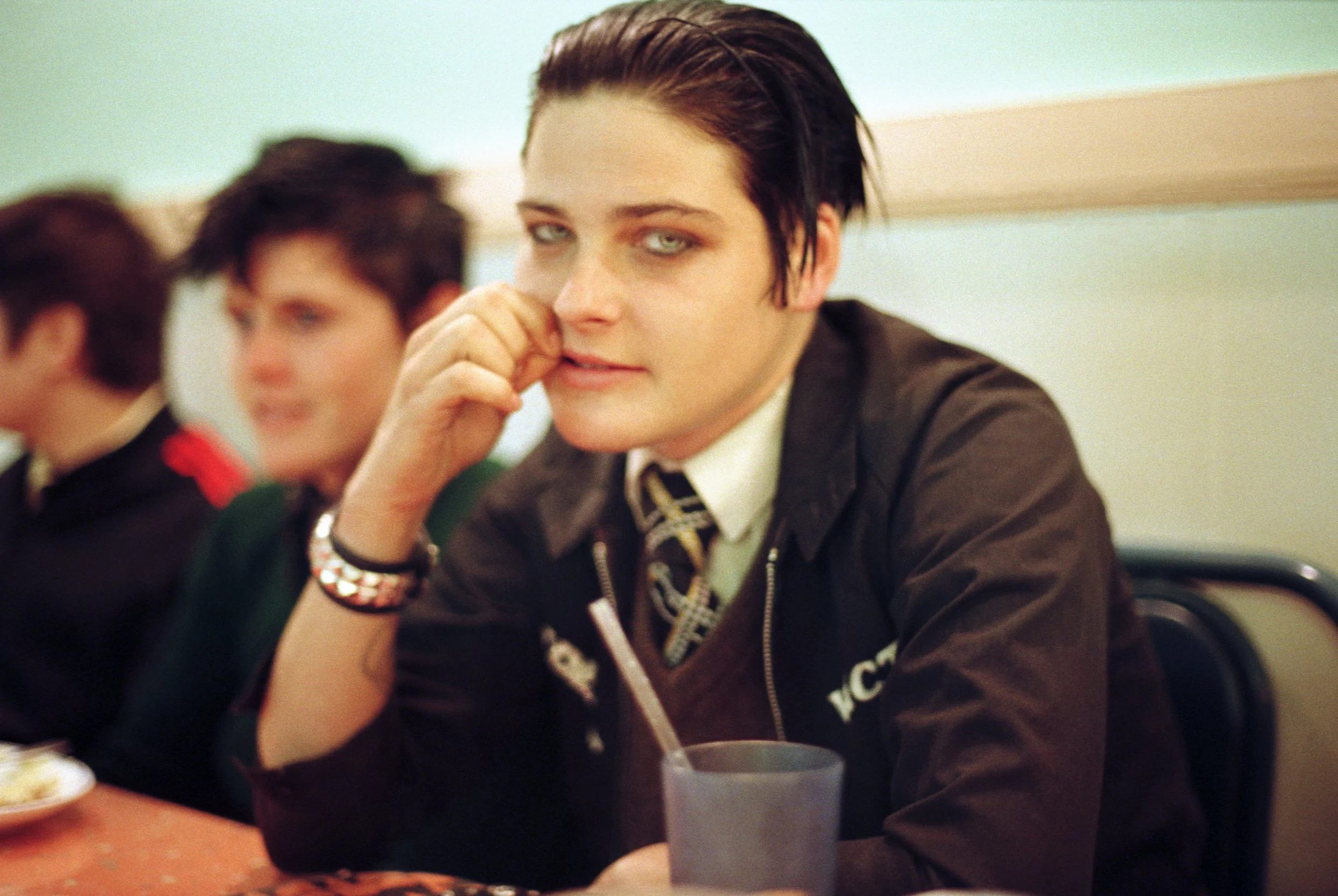PHOTOGRAPHY
When We Were Renegades
In the 1990s, San Francisco began a new, pivotal chapter in queer history, one where butch/femme culture thrived, gender bending was the norm, and community was everything. Chloe Sherman was there to capture the moment.
Elitrea on the road, 1998. All photographs © Chloe Sherman.
By CHLOE SHERMAN
As told to Kristina Feliciano
The ’90s in San Francisco were groundbreaking. Housing was cheap, and the low rent allowed for youth, outcasts, risk takers, artists, and free spirits to move to the city from across the country and the world. They had time to be creative and experimental, and it was a vibrant and dynamic era.
The Mission district was the heart of it. Everything was within walking or biking distance. In the chilly, foggy evenings, we’d make our way to clubs, bars, and friends' homes. There were no cellphones—we’d just meet up at the Bearded Lady Cafe or the Lexington, maybe Dolores Park or a taqueria. We lived usually three or four to a drafty and dark classic San Francisco Victorian flat. It was everything we wanted and more than we could ask for.
The queer scene arose from this energy.
Amita & Sunny, 1998.
Amita and Sunny were an iconic butch/femme couple in San Francisco in the 90s. In this photo, they’re at the one-year anniversary party of the Lexington Club, in the basement room, where the staff hung out. Sunny, one of the original bartenders, and his girlfriend are relaxing with a smoke before offering more Champagne to the crowd upstairs.
Lila “Lexington” opened "The Lex" in '97 to create a queer bar/dyke bar in the Mission. It was a hot spot, a regular nightly hangout and celebration place for all holidays. On a normal week, we might be there three or four times. The Lex had strong drinks, was open seven days a week, and had a pool table and juke box. It was the scene of countless get-togethers and breakups before closing in 2015.
Silas and Keiron, Fort Funston, 1994.
Anna Joy, post-op, 1997.
Ever the high-femme, Anna Joy looked as glamorous recovering from surgery as she did every other day. I photographed her as she received well wishers in her house on Bernal Hill in the outer Mission.
Asia and Ace, Sausalito, 1998.
In San Francisco, a sunny day was an excuse to go for a short drive out of the Mission into Sausalito and have a picnic, stopping for food from Rainbow Grocery on our way.
Queer-centric businesses thrived: cafes, bars, clubs, tattoo shops, performance spaces, galleries, etc., and everyone supported each other. It was a queer cultural renaissance, particularly in the Mission, and the sense of community was potent. There was also a new wave of feminism: gender bending with a strong butch/femme culture.
I was lucky enough to witness it in person. I had moved to San Francisco in the ’90s to pursue a BFA in photography at the San Francisco Art Institute. I began documenting this generation of young self-identified queers, and this community became family. I cherished and reveled in their collective creativity, support, pride, and strident defiance of cultural norms. I found beauty, grace, and bravery in a subculture that was derided by mainstream society.
Elitrea, Asia, and Silas, 1996.
Miriam and Daniel, Mission Dolores, 1997.
Miriam and Daniel were dating at the time of this photo. The location was an abandoned rear lot near Dolores Park. To get to it, you had to go down a narrow alley. I love this image for its timeless feeling…
Margaret & Jill with Martinis on New Year’s Eve, 1998.
Margaret and Jill were an impeccably dressed couple. Margaret always wore retro dresses and rhinestone jewelry and accessories. Jill was usually in suave suits with slicked-back hair. They were so photogenic.
Now, almost 30 years later, I’ve begun revisiting this body of work, poring over contact sheets that I had never paid much attention to. I shot hundreds of photographs—in people’s homes, in bars and cafes, on the street, in the park—all on 35mm film that I have only recently scanned into digital format, edited, and printed.
In June, Schlomer Haus Gallery will exhibit 36 of my photographs: 28 color and eight black & white. Half of them have never before been printed or exhibited. (I’m also working on a book that will showcase a much wider selection.) I titled the show "Renegade: San Francisco, The 1990s" to reflect the revolutionary attitudes of the people in my photographs. Of my people.
Asia, Elitrea, and Anna Joy, the Mission, 1996.
In the 90s, queer fashion in the Mission was unmistakable and stellar: hoodies, trucker hats and belt buckles, salvaged men’s dress shirts, Manic Panic colored hair, piercings, tattoos, wallets on chains, vintage dresses and slip dresses with combat boots (actually, combat boots with almost everything). No cell phones meant land lines and occasional pagers, requiring a pocket full of coins for a phone-booth callback. Some people had cars, and in the name of aesthetics and price, they were often fabulous classic cars—not necessarily well kept, but they looked great.
Cooper, Cindy Mah, Silas, and Harry outside Red Dora's Bearded Lady Cafe, 1996.
Founded by Silas, Harry, Judith, and Lori, the Bearded Lady, as it was known, was a coffeehouse, gallery, event space, backyard hangout, pit stop, and connecting point—a hub of queer Mission life. The coffee was always hot, and you could grab a soup of the day or a bagel, all made in the tiny kitchen consisting of a big espresso machine, a few hotplates, and a toaster. There were always stacks of flyers for events and a “housing book” where people placed notices for flats or rooms available to rent or sublet. For queer newcomers to San Francisco, the Bearded was their first stop.
“I found beauty, grace, and bravery in a subculture that was derided by mainstream society.”
Godspeed, Poplar Alley, 1999.
Many of us got around town on a hardy beater street bike. We hauled groceries in messenger bags and on bike racks. Kryptonite bike locks crashed around the handlebars as we rode, and stickers and tape covered the frame. Slick trolly tracks and SamTrans buses, the cause of wipeouts, were our nemeses.
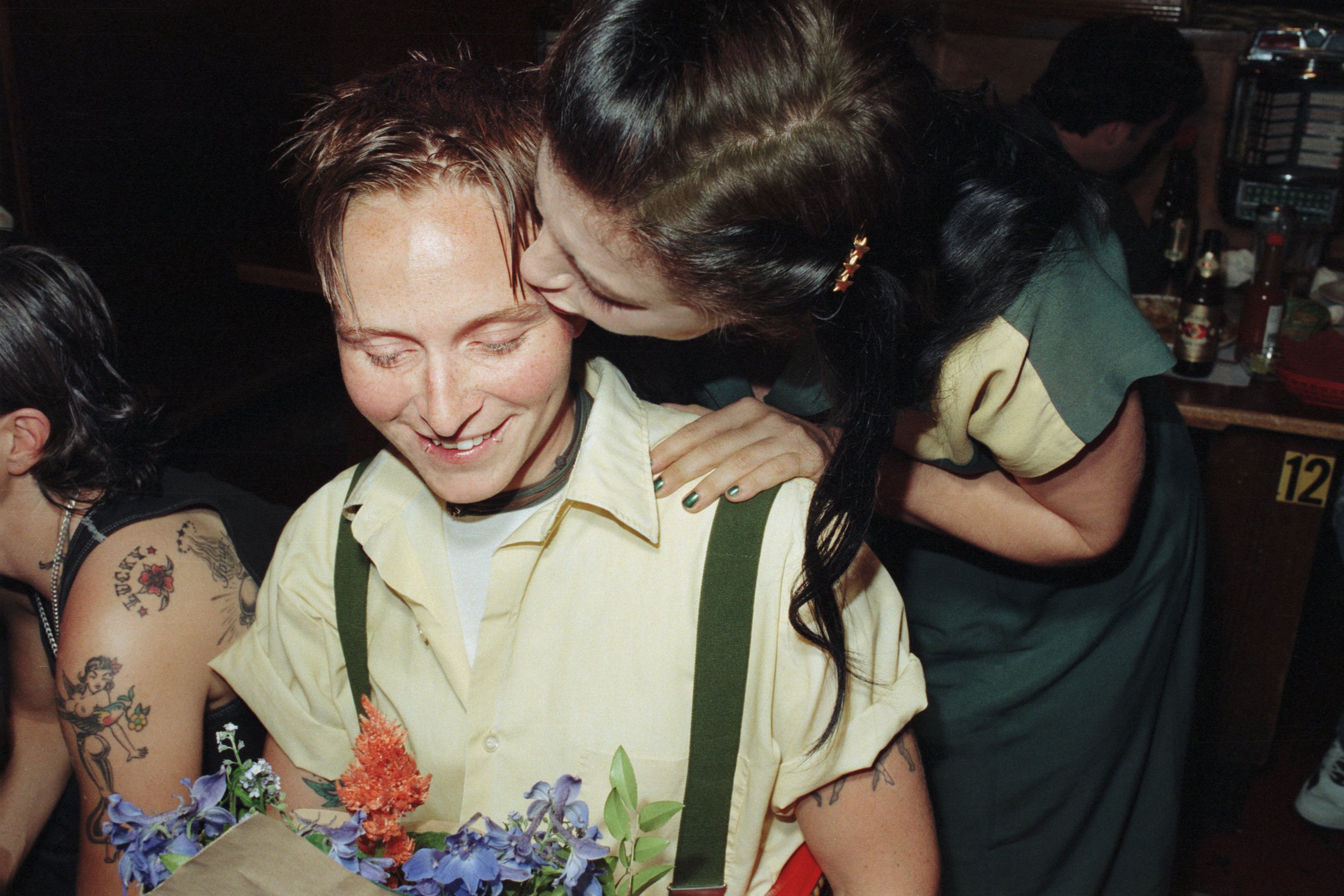
Ace and Anna Joy, Cancer Sign Birthday Party, La Rondalla, 1998.
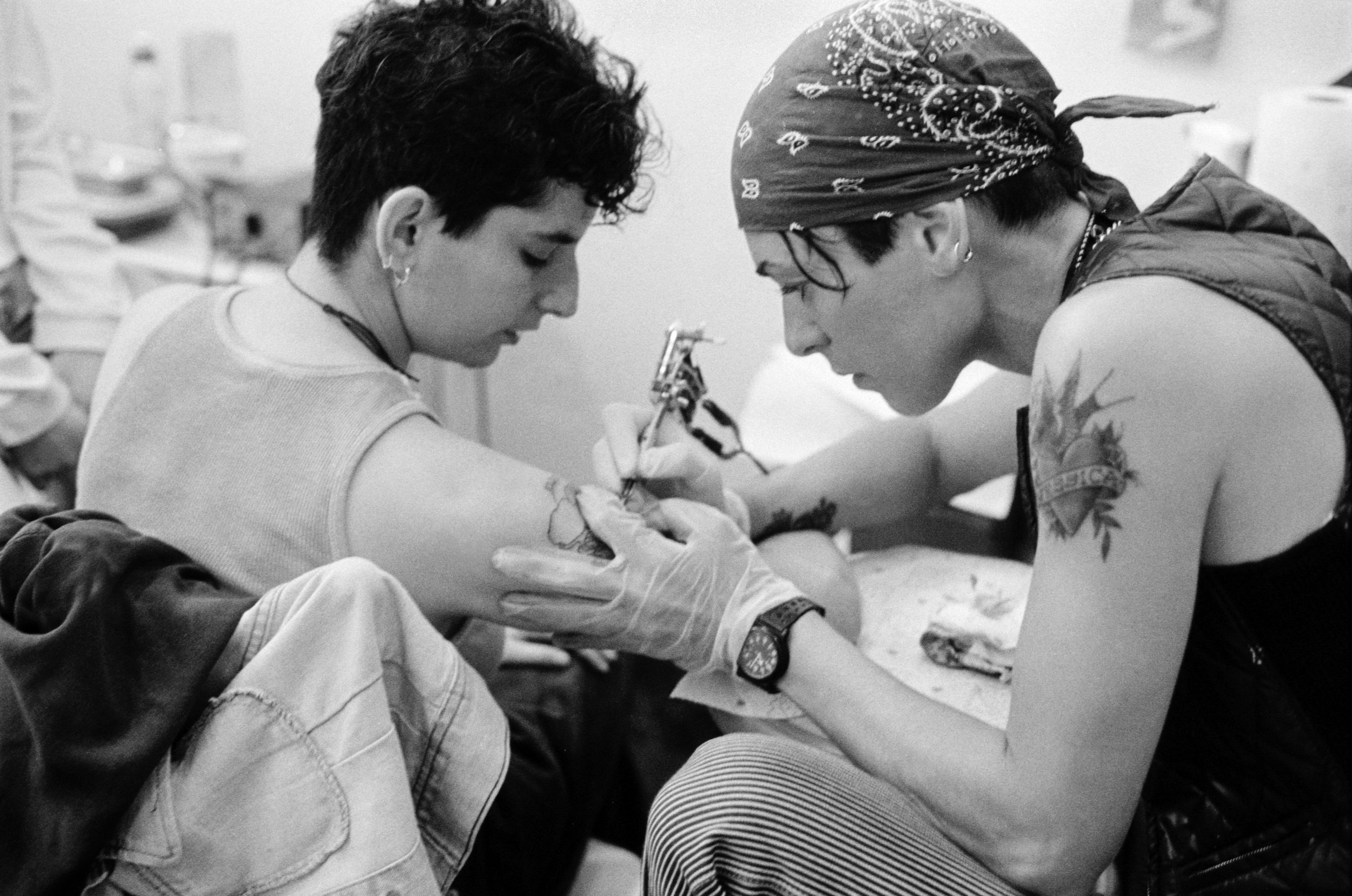
Dianne DiMassa tattooing Moira at Black and Blue Tattoo, a women-owned tattoo shop next to the Bearded Lady, 1995.
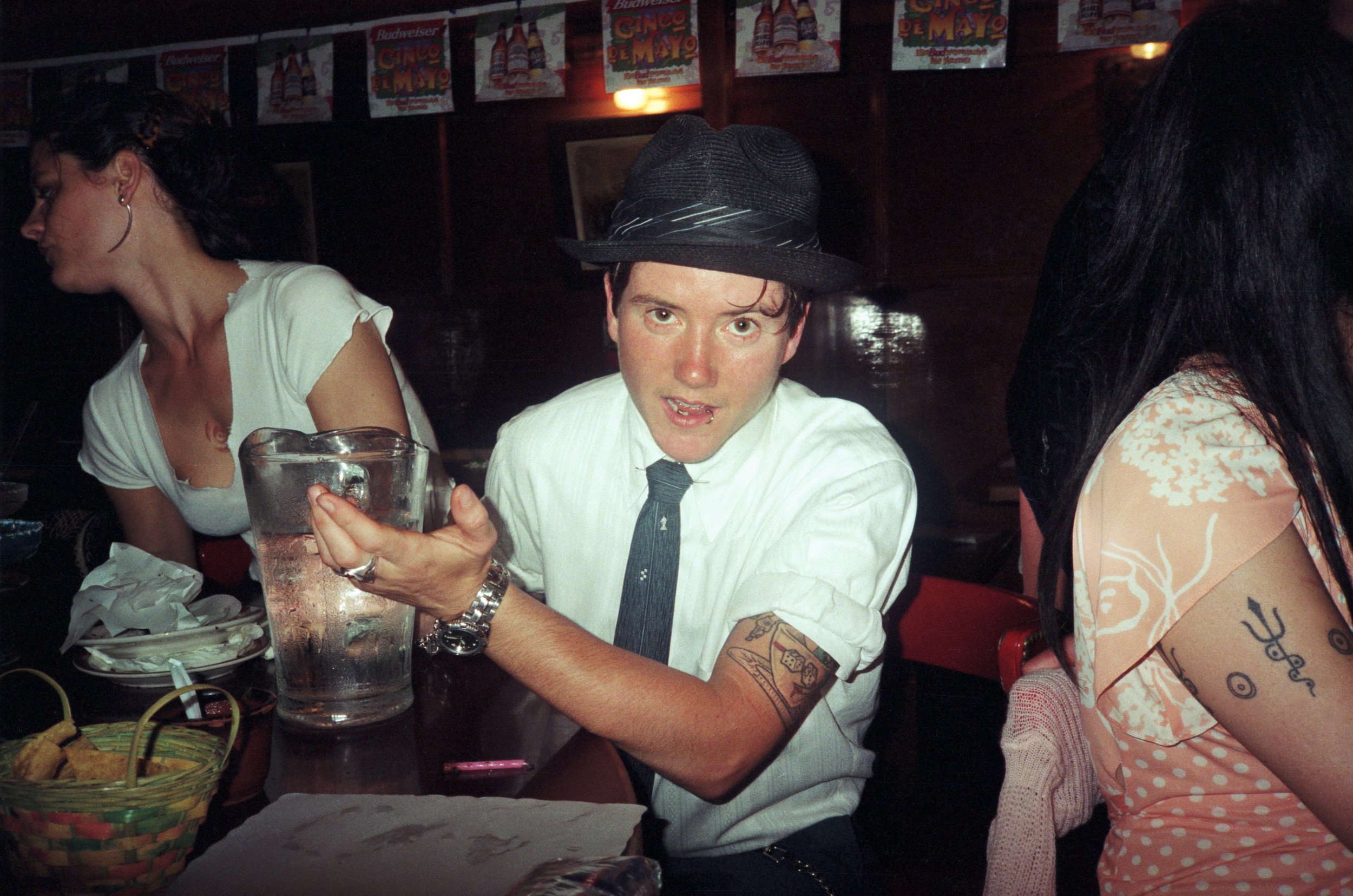
Silas at Puerto Allegre, 1997.
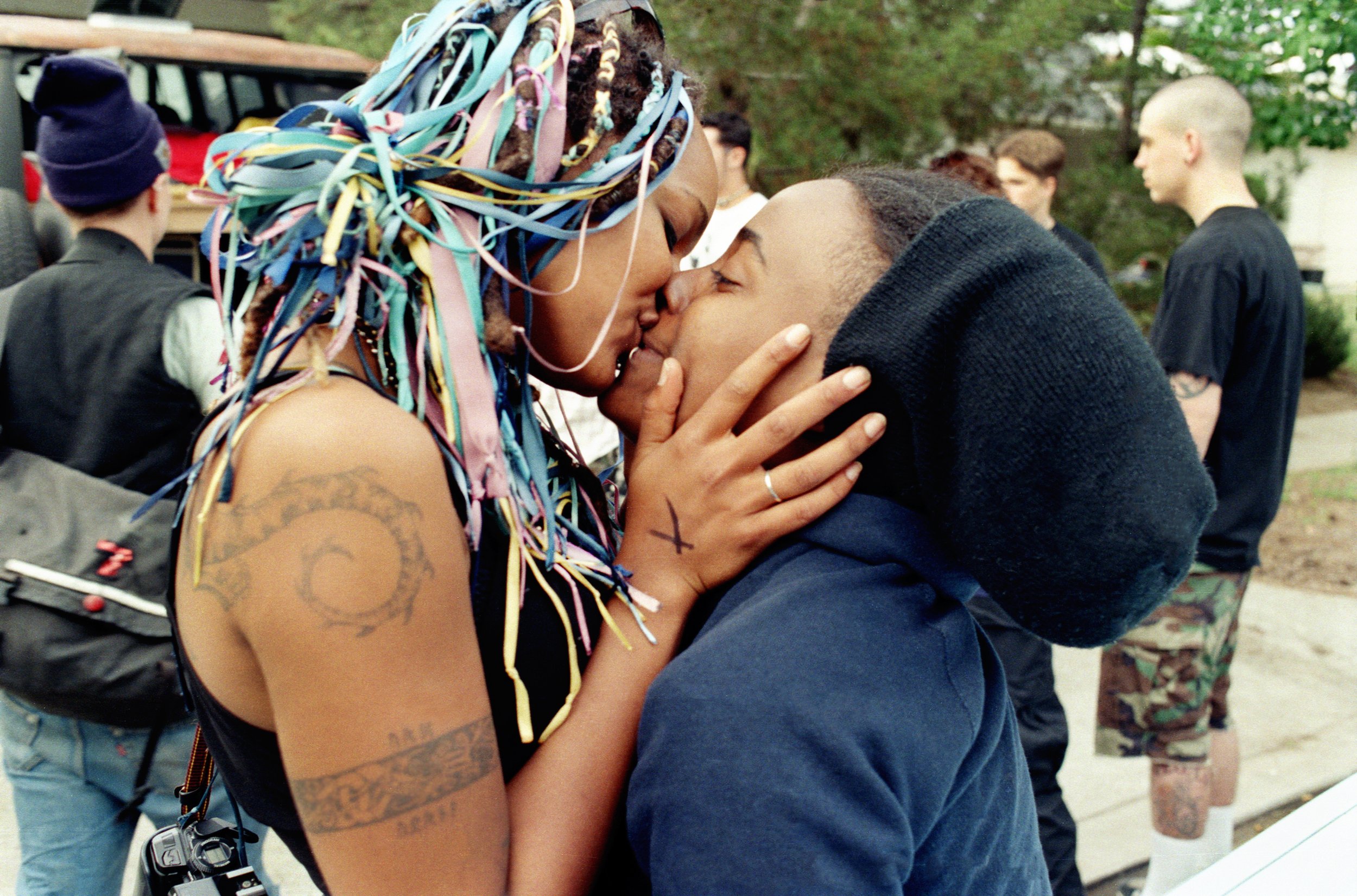
Ulla and Elitrea, 1998.
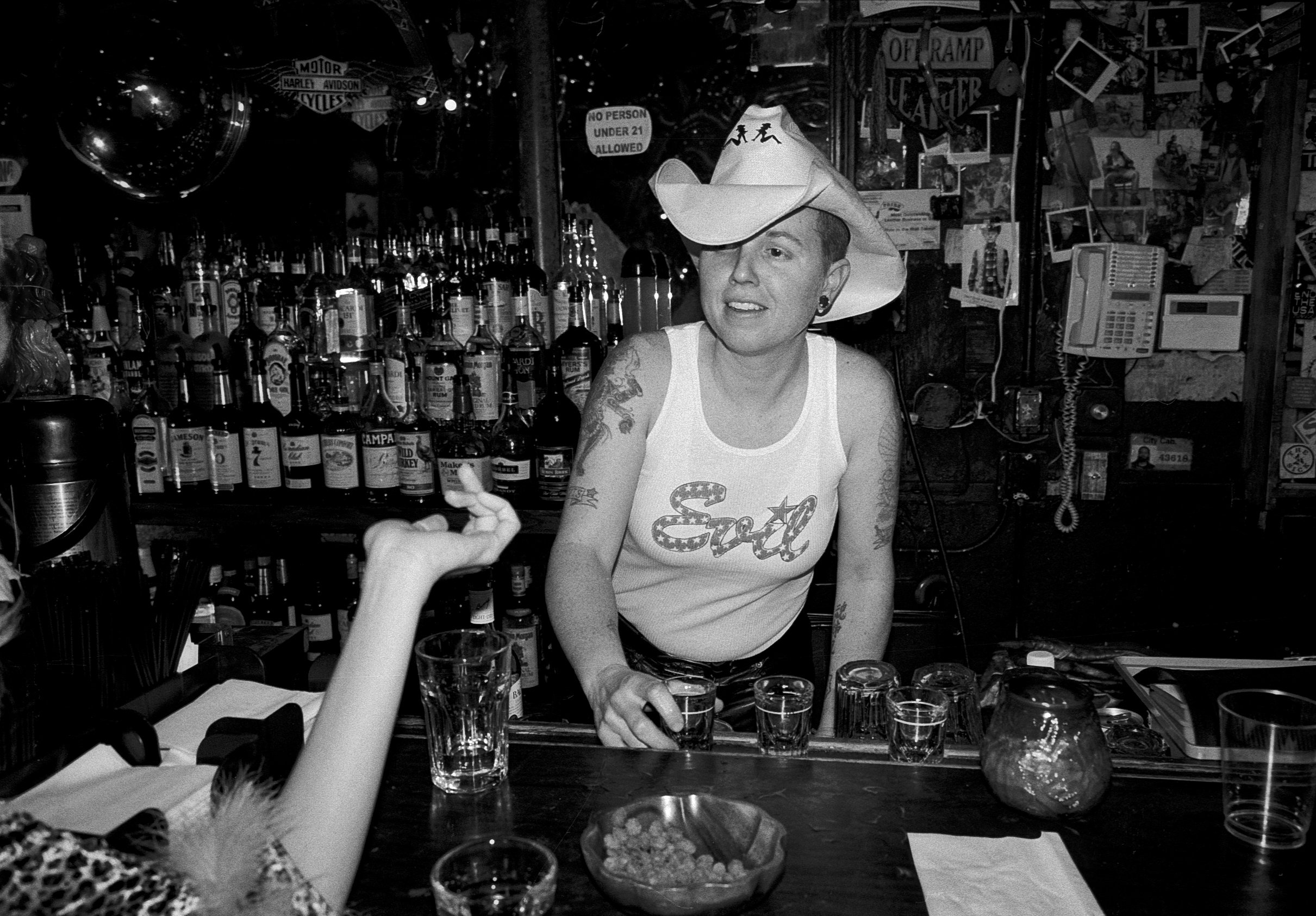
Steak House serving a shot, South of Market, 1999.

Leslie and Tai at Puerto Allegre, 1997.
“I titled the show ‘Renegade: San Francisco, The 1990s’ to reflect the revolutionary attitudes of the people in my photographs. Of my people.”
Malia and Colt at Beer Club, 1998.
Malia and Colt were “bros,” always hanging out, riding BMX bikes, and generally appreciating “the ladies.” They started Beer Club as their own exclusive invitation-only group that met essentially whenever they were out and about.
Cooper, Cary, Sini, Daphne, and Kelly heading to Folsom St. Fair, 1994.
Daniel, mid ’90s.
See the Exhibition
I learned of Chloe Sherman’s work while on a wander through Instagram. The ’90s were the era of my youth, and I instantly connected with the fashion and passion on display in her photographs. (Not to mention the richness of the color and grain of the images, which were all shot on film.)
But there was something else: that unmistakable fiery freedom of being young. Chloe’s work is a document of an era in queer history but also a celebration of what it feels like when you’re discovering yourself, before the responsibilities and banalities of everyday adult life come to the fore. In her photographs, as in youth, everything’s a little extra. And it’s thrilling.
The San Francisco-based Schlomer Haus Gallery will be presenting a solo exhibition of Chloe’s work during Pride month. “Renegade: San Francisco, The 1990s” opens June 17 and runs through July 30. For details, visit schlomerhaus.com. Hope to see you there. In the meantime, give Chloe a follow. —Kristina Feliciano


